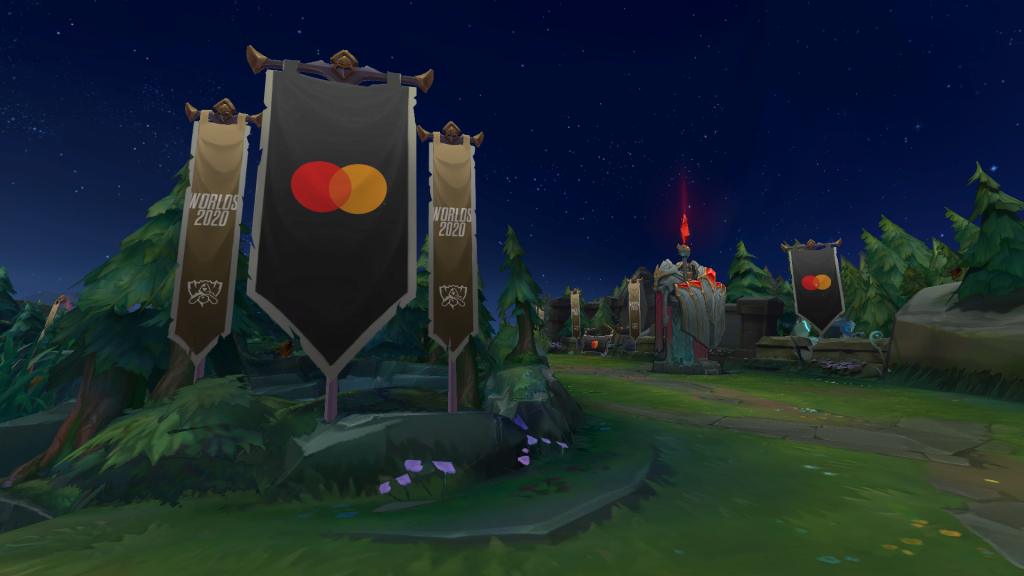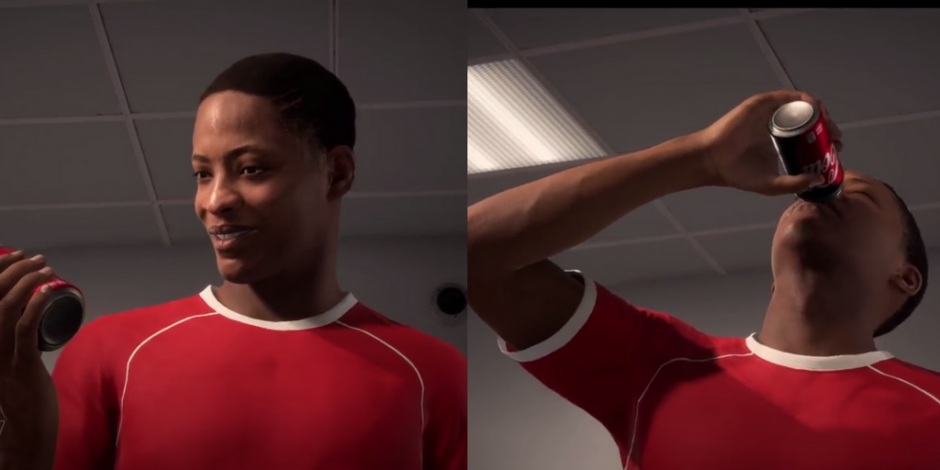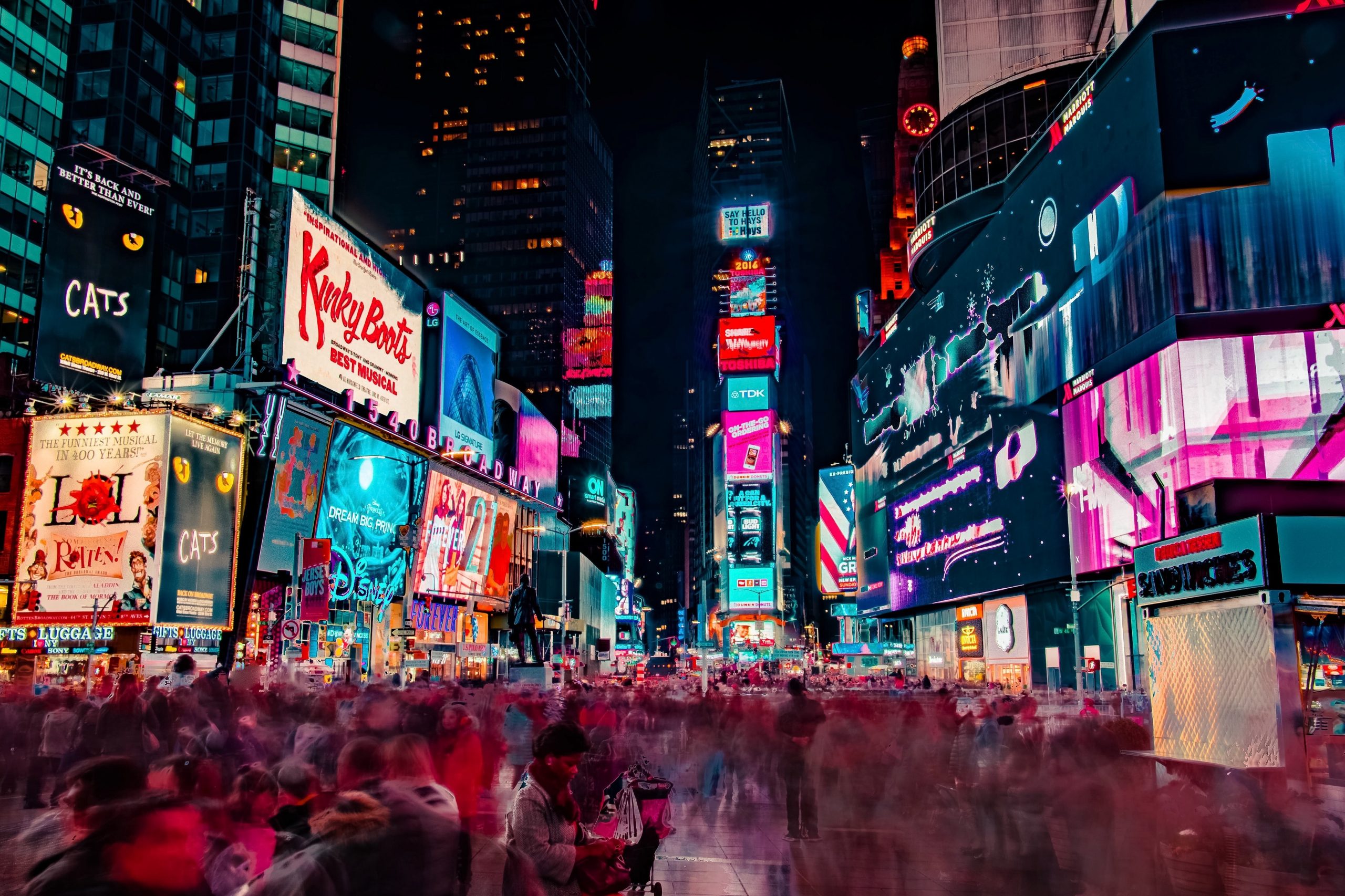The rise of product placement
Brands have always been in gaming. In the early days the product placement was less subtle. The world’s biggest brands often commissioned titles specifically for marketing purposes. Coca-Cola’s 1983 Pepsi Invaders reportedly served as a guerilla marketing ambush. It was a promotional rip-off of Space Invaders urging players to shoot Pepsi. To think, video games played a part in the Cola Wars almost 40 years ago.
More followed, such as Zool (Chupa Chups), Pepsiman (Pepsi), Cool Spot (7 Up), Push-Over (Quavers), and many from McDonald which had Happy Meals to sell. In the annals of history, these titles are more remembered for their flagrant branding than their gameplay. In the 3D era, gamers became more scrupulous, and brands found it easier, and more effective to buy space in titles likely to sustain and entertain large audiences.
With the rise of the Xbox 360, Obama campaign posters were integrated into Burnout Paradise on in-game billboards. Alan Wake wielded a Verizon phone and a life-saving torch stocked exclusively with extremely short-life Energizer batteries. Pizza Hut skins in Phantasy Star and Subway tie-ins for Uncharted’s Nathan Drake soon followed. Burger King was a cutman in Fight Night Round 3 and Playboy magazines granted an experience boost in Dead Rising 2. Placements were closely integrated into gameplay to show product benefit.
These deals were agreed pre-launch. There was risk involved. What if the partner game proved to be controversial, or worse, a dud. With the rise of always-connected consoles and games as a service, brands can come in later, and have a good idea what their getting – which now, is a lot more than simple product placement.
Ad possibilities
Gaming’s barrier to entry lowered drastically due to the surge of smartphone ownership. Freemium games lowered a further barrier and introduced a flux of casual gamers. Suddenly, games companies started sounding like more like Facebook and Twitter, with engagement and daily active users targets. Huge ad networks then formed to deliver personalized advertising at scale.
App Annie claims that global mobile game downloads reached one billion a week in 2020. There are an estimated three billion gamers in the world, with 2.5 billion of them on smartphones. Developers face a Darwinian climb up app store ranks, powered by the aforementioned ad networks that see the value in cross-promoting look-alike audiences. Mobile game developers have to strike a balance between fun, ad load, and in-game monetization. Incentivised ads are currently favoured with players receiving power ups/lives in exchange for watching an ad.
It’s a win/win with a clear value exchange – players have three choices, end their session, spend some money or watch an ad. An irritating ad experience can encourage in-game spend or put a player off a game forever. These interruptions have their place but native ads and product placements are now finding true scale thanks to numerous advertising companies creating user-friendly tools for developers and the marketers on the spend end. They can now serve ads to in-game billboards, bus vinyls, digital panels and in-stadium hoardings in real-time, at scale. Sandbox and sports titles replicate the ad apparatus of the real world enabling brands to run their creative formats in virtual spaces. These networks promise contextually relevant experiences that give players a feeling of a lived-in world.

There’s additional applications in esports too where brands are still exploring the best ways to activate their sponsorships. In-game ad placements during an esports heat can be streamed to millions across YouTube, Twitch, and even on linear TV. The medium becomes broadcast. MasterCard’s in-game branding for League of Legends led the way here in 2020. Riot said the SR Arena Banners “echo the energy found in major sports arena”. 50+ brand partners can access this innovative inventory.
Sponsorship forms a huge chunk of esports revenue and the teams that create the best integrations will have the edge. Most are positioning as lifestyle brands, G2’s Adidas deal foreshadowed this. The deals are coming in thick and fast, with Esports Insider operating monthly lists to keep tabs on all the sponsorship innovation.
Esports fans represent some of the most hardcore of gaming fans – many brands will instead be more keen to talk to the broader segments in mobile gaming. But they must tread carefully. EA’s UFC 4 trialled full screen in-game ads within ‘replay’ moments during gameplay. Fans were unhappy with the post-launch implementation of ads on their triple AAA game. Street Fighter 5 received similar difficulties for running ads on the clothing of its iconic fighters in exchange for a valuable in-game currency.
Chris Hardiman, product director at advertising giants Xaxis, suggests the knowledge to activate in individual games isn’t “as readily accessible as it is for traditional media”. Yet. There may be growing pains but brands can’t afford to get left behind. Gaming is quickly becoming a hugely effective space to find a diverse range of audiences. An eMarketer study of global internet users classified 83% of all women and 88% of men as gamers in 2019. And it skews older than you may think too, in the study 71% of 55-64s admitted to gaming on any device. Ofcom research suggests an “increase” of UK gaming time from 2019 to 2020 – with the pandemic establishing new habits.
And those eyeballs are leaving other mediums. In the battle for eyeballs TV is locking horns with gaming, and according to Netflix in 2019, gaming’s winning. According to Nielsen data, more than 60% of Twitch esports fans do not view linear TV on a weekly basis, only half have a paid TV subscription. By remaining with traditional marketing channels, some brands will lose swathes of consumers forever.
Where The Lines Blur
And that brings us to the metaverse, the virtual world and supposed successor to the internet. After a more than a year in lockdown, we’ve increased screen time, our reliance on cloud technologies and have connected with friends and family in chat lobbies (often, but not always, in gaming). The metaverse is approaching and it will be gaming that helps bring this sci-fi concept to life.
Fifa 18’s The Journey had players control the career of up-and-coming footballer, Alex Hunter. In the game, Hunter signed advertising deals with Coca-Cola and Adidas, starring as a brand ambassador in the game. Where the product placement gets trippy is that the virtual influencer then went on to star in the real ad campaigns for these top brands.
There was a time brands were placing ads into games, now the games were being placed in the ads. The lines were blurring. Hunter was something new to the world of endorsements. The integration continued in later releases.

Then in 2019, the metaverse started gaining traction, thanks in part to a 10-minute ‘live’ Marshmello concert within the game Fortnite, which attracted 11 million people. It was a mass simultaneous experience in the game (or at least giving the appearance of one despite being split across around 100,000 lobbies). It threatened to upturn the world of music and had many question just what a ‘gig’ was?
Even before the pandemic forced a stop to mass experiences, Epic’s in-house team was bringing people together around branded events or with bespoke skins. NFL, Punk’d, streamer Ninja, Marvel, Star Wars, and a three-day gig/takeover with Travis Scott all took place, but Fortnite wasn’t the only game in town. In Animal Crossing: New Horizons, KFC Philippines built an island with a restaurant. Players who could find Colonel Sanders were awarded free real-world food. The Getty Museum also let players decorate their homes with its famous artworks. In Minecraft, Reporters Without Borders built an Uncensored Library to give a safe home to works outlawed in autocratic regimes.
The experiences have to “improve upon reality” says Roblox’s senior director of product Morgan Tucker who discussed its own Lil Nas X performance. If it’s not better than the real thing, why do it? The possibilities exist beyond gaming.
Verizon Media’s Ryot XR catwalk and Super Bowl experiences, where mass fan attendance faltered, attempts were made to drive mass viewing participation. Meanwhile, Twitch’s unique blend of live social video and interactivity delivers gamified TV experiences like Corsodyl’s good hygiene game or Lexus’ custom car creator which players voted to design. The new line of media has us asking the differences between game and a gamified experience? The virtual is spilling into the real world too. What began with Pokemon Go, and augmented reality filters on mobile, got many brands thinking – Pizza Hut’s AR Pac Man via a QR code shows potential.
Meanwhile Snap’s courting developers for in-camera games, while Three’s ‘Puggerfly‘ was a pioneering example of the Tamagotchi reimagined for the modern era. Let’s not forget Nintendo’s collaboration with Lego to bring Mario Kart into the home via AR. Another Mario Lego toy was recently updated to call for his brother Luigi. Could physical toys also helpfully remind us of movie releases, game updates, or virtual events in the near future?
The growth of 5G infrastructure promises to afford greater fidelity to these experiences while also lifting the bar of what on-the-move gaming can deliver.
But can the tech giants play nicely with each other and enable the cross-play and cross functionality to enable the metaverse? Microsoft with its mix of work solutions and Xbox gaming ecosystem seems best placed to capitalise. Facebook, Amazon, Google and Epic Games are unlikely to rest on their laurels, but the metaverse can’t truly be realised if warring corporate giants build walled gardens and engage in anti-trust battles.
Finally, the streaming frenzy that dominated video is also coming to gaming via the cloud. Xbox’s Game Pass, PlayStation Plus and Google Stadia are just some efforts to lower the barrier to AAA gaming by removing the need for the hardware. The revolution that enabled billions of smartphone players could soon open access to the biggest titles. And that brings further even more intriguing possibilities.
Wherever the ongoing evolution takes the games sector, the value, reach and engagement of gaming means that marketing is likely to play a ever greater role in new ways to build relationships between brands and players.
John is media editor at The Drum. It's his job to tell agencies and advertisers everything they need to know about media.



































